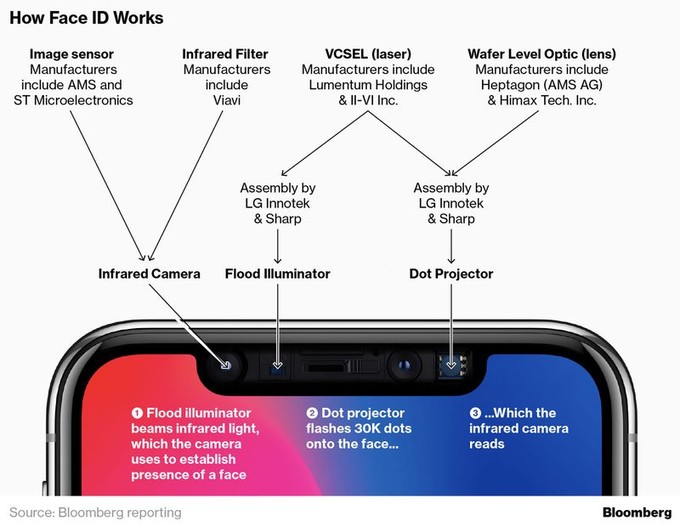Update: In response to Bloomberg’s claims, Apple has said that it has no changed the accuracy of Face ID and the termed the report as completely false. Here is the official statement:
“The quality and accuracy of Face ID haven’t changed. It continues to be 1 in a million probability of a random person unlocking your iPhone with Face ID. Bloomberg’s claim that Apple has reduced the accuracy spec for Face ID is completely false and we expect Face ID to be the new gold standard for facial authentication.”
Original Post:
Apple will start receiving the pre-orders of the iconic iPhone X from Oct. 27. Recent reports have revealed that the Cupertino company would be shipping only 2 to 3 million iPhone X units on its Nov. 3 release date. Also, the company is speculated to ship only 20 million units of the smartphone until the end of this year. However, an earlier prediction by KGI Securities analyst Ming-Chi Kuo claimed that the company would be shipping 30 to 35 million iPhone X units before the end of 2017. Rumors had also claimed that Apple may delay the release of iPhone X. A recent report by Bloomberg reveals that the company has managed to make the iPhone X available on time by reducing the accuracy of its face identification feature.
Apple introduced face scanning feature called Face ID for the first time on the iPhone X that was unveiled on Sept. 12. To explain that the new Face ID is highly secure than Touch ID, Apple had claimed at the launch event of the iPhone X that the probability of fooling the robust Face ID security feature 1 in 1,000,000. Recent reports have revealed that the production of the iPhone X has been impacted because of the highly complex TrueDepth Camera system and Face ID.

The Face ID sensor consists of three components such as a dot projector, flood illuminator and an IR (infrared camera). The function of the flood illuminator is to emit infrared light to lighten up the face of the user and then the camera manages to identify the face because of the produced light. The dot projector will emit 30,000 dots on the face. The light bounces back to confirm whether the pattern of the face resembles with the registered face.
Manufacturing the dot projector is a difficult task as a difference of even a micron between it and the overlying glass can lead to inaccurate results. In a bid to make the iPhone X available by Nov. 3, it appears that the Cupertino company has reduced the accuracy of the face scanner. It is unclear that whether doing so can hamper the quality of the face scans.
Read More: Cheaper iPhone X-Like Models Codenamed as Lisbon, Hangzhou Reportedly Arriving in 2018
Previous reports have revealed that Apple had also faced issues with the manufacturing of OLED panels. The reason behind it is that the company requires customized OLED panels with u-shaped cut at the top to house the TrueDepth Camera system. Reports suggest that Apple could manage to resolve the issues surrounding the production of OLED panels by July.
(source)







